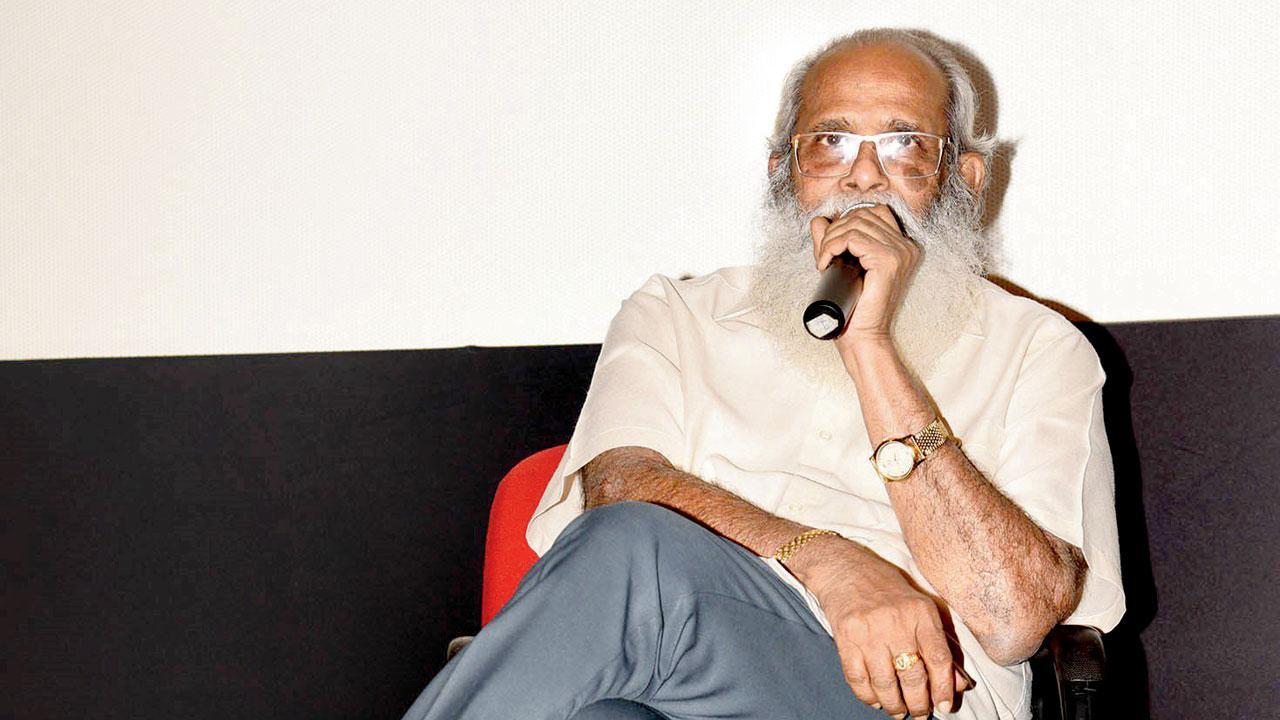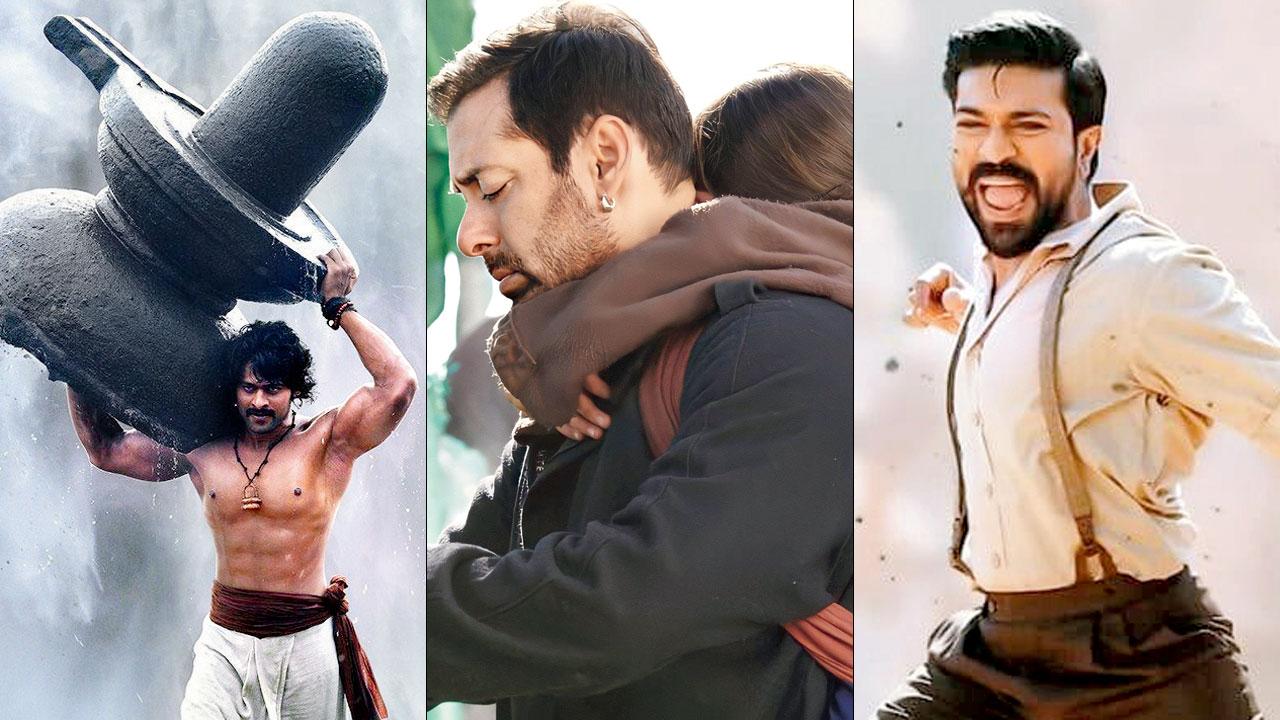Vijayendra Prasad knows a thing or two about scripts and audiences; sharing a few here

V Vijayendra Prasad at IFFI, Goa
 The night before I met screenwriter V Vijayendra Prasad, 82, at the International Film Festival of India (IFFI), Goa, he’d been asked by the emcee at the festival’s opening ceremony to motivate the young, by naming his life’s inspiration. He said, “Mahatma Gandhi”—fishing out a currency note from his wallet: “I mean the Gandhi here!”
The night before I met screenwriter V Vijayendra Prasad, 82, at the International Film Festival of India (IFFI), Goa, he’d been asked by the emcee at the festival’s opening ceremony to motivate the young, by naming his life’s inspiration. He said, “Mahatma Gandhi”—fishing out a currency note from his wallet: “I mean the Gandhi here!”
ADVERTISEMENT
At the screenwriting masterclass I host for Prasad the following day at IFFI, everyone in the hall seems to have heard his Gandhiji joke. They’re also there for a similar reason—to learn how to script money-spinning movies, from the writer who’s delivered them back-to-back.
From S S Rajamouli’s Baahubali (2015) and its sequel (2017)—biggest hits, by far, in Indian cinema history—to RRR (2022) that’s floored cult film buffs in mainstream America in ways that no Indian movie has.
Prasad also wrote Bajrangi Bhaijaan (2015), biggest draw in Bollywood, upon release—besides about 25+ commercial successes in Telugu. Including the superb fly vs man idea behind Eega (2012), that made Rajamouli a sensation of sorts outside Andhra/Telangana. Prasad is Rajamouli’s father.
The effort behind scripting a small or big budget imagination, he says, is the same—of course go for the spectacle; the money is more! Which is easier said than done, yes. But while Prasad is a self-taught screenwriter, he shares what works for him—patiently drawing a graph on a whiteboard, with emotional highs and lows on the X-axis, and the 2.5 hours’ timeline on the Y.

Stills from Baahubali, Bajrangi Bhaijaan and RRR. Pics/Twitter
Foremost, he argues, unlike roti, kapda, makaan, movies are not a necessity. So you have to firstly generate hunger for it: “You do this with the story, casting stars as per their image…” Once the audience is primed up enough, they show up in theatres, perched on the shoulders of the filmmaker to figure out what he’s gonna show now!
It’s imperative that within five minutes, the film delivers its first “clapping point”, an emotional payoff—say, an atom bomb drops in Bombay! The audience, satisfied, jumps off the shoulder, willing to hold the filmmaker’s hand, as he takes them through Clapping Point A, to B, to C…
There are equal stretches of lows in between the peaks—for, the highs will lose all meaning otherwise. Scenes seamlessly connected to each other—along the pendulum, swinging between clapping points—is the glue for this story.
From Simhadri (2003; Amazon Prime Video)—Prasad’s first collaboration with Rajamouli—down to Magadheera (2009; Hotstar)—that made Rajamouli Sir the superstar-director—you can watch Prasad’s X-Y graph taking movie-shape.
Sounds like a formula/template, alright. Only that within this structure, Prasad has had diverse inspirations, based on the brief. Which, in Baahubali’s case, was a period film, with Prabhas, and a few female actors.
Also, Rajamouli wanted to attempt Baahubali as net-practice for his eventual dream, the Mahabharat! Just the budgets kept shooting up during production.
The script began, in Prasad’s mind, with soldier Kattappa telling a Persian trader a long story of a great swordsman in battle—his body eventually covered in blood, only that they were his slain rivals’.
Trader asks to meet this Baahubali (strongman). Kattappa tells him about how the bravest can get stabbed in the back. The other scene Prasad imagined was of a woman protecting an infant from a storm/sea, while wading through it.
Prasad thinks in scenes/visuals. They usually drop into his head during walks, fresh in the morning. He considers Salim-Javed his North Star, in a sense. And Indian mythology, the ultimate source to mine from. Sholay (1975) and Mayabazar (1957), in Telugu, are his movie-bibles.
Given a spate of big-budget, Bollywood flops post the pandemic, there was an allegation that Hindi cinema, way too westernised, had given up on its roots, only to alienate its core audiences, with South Indian films taking over. Prasad thinks that’s rubbish: “Grass looks greener… You hear of two-three Telugu superhits. You don’t hear of 90 per cent Telugu films that flopped.”
Between Salim Khan and Javed Akhtar, Bollywood’s greatest star-writers from the ’70s, fans have often argued over who did the actual ‘writing’. Fact is, neither did. They hired an assistant to put words on paper. As with Prasad. He gets to this ‘scripting stage’ once the story is greenlit by a star. Until then, it’s all in his head.
Aamir Khan rejected one such story by Prasad, after hearing his ‘narration’. While he was moved by it, Rajamouli too turned down the same story, since he was engrossed in the making of Baahubali then. This is how, through director Kabir Khan, Prasad got Salman Khan to hear it, and Bajrangi Bhaijaan happened.
Prasad was born in 1940-41. He would’ve been 75 then. Indeed, his biggest, global blockbusters have happened past his mid-70s. He only got into screenwriting in his late 40s—having failed in multiple businesses, from farming to fertiliser. What drew him to this trade? “Hunger”. He means that literally. Also, he’s certain that his best scripts/works are ahead of him.
In a world of instant gyan-givers, we’re usually obsessed with teaching lessons to the young—”to follow Gandhi”, as Prasad joked! Ones Prasad must inspire are actually the old. Just that he hates giving advice: “I love taking advice instead—would rather be a sponge, than a rock, absorbing nothing under the river!”
Mayank Shekhar attempts to make sense of mass culture. He tweets @mayankw14
Send your feedback to mailbag@mid-day.com
The views expressed in this column are the individual’s and don’t represent those of the paper.
 Subscribe today by clicking the link and stay updated with the latest news!" Click here!
Subscribe today by clicking the link and stay updated with the latest news!" Click here!







